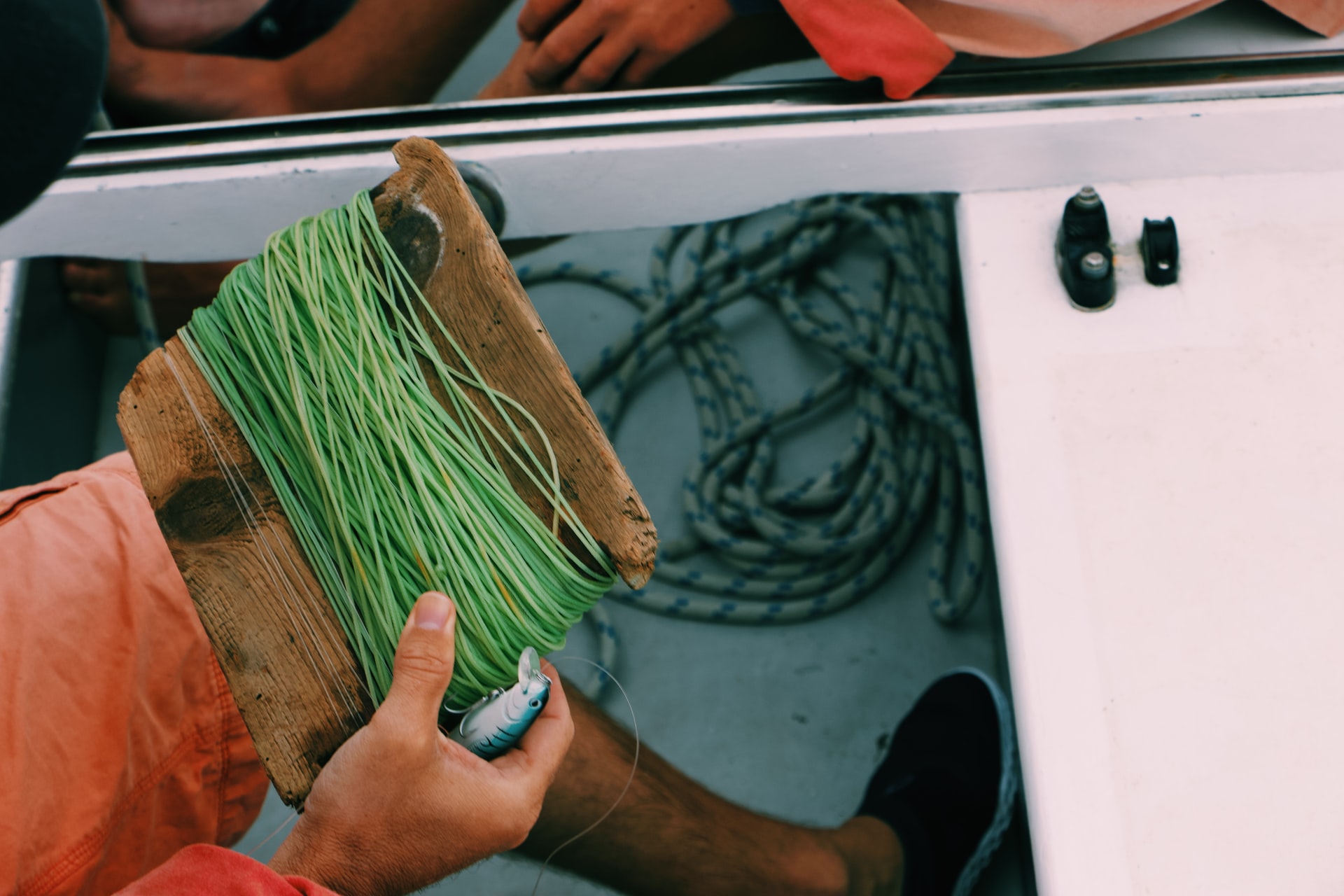.jpg)
Seafishing is proving to be very popular and particularly varied in terms of techniques and research. Choosing a line diameter is of vital importance, as it will be the link between you and the fish.
You can choose between different materials. You'll need to choose between nylon, which combines good elasticity with a wide variety of colours, and braid, which offers greater strength for a finer line size. You can also opt for fluorocarbon, which offers great discretion while being particularly resistant toabrasion.
You can take different approaches depending on how you intend to use your line. Filling a reel to ensure good glide through the rings, equipping a spinning rod for young anglers or even getting through crowded places - all these different situations will require you to constantly review your choices.
You'll then have to make your choices taking into account the techniques you're going to use. For example, certain products are more likely to be used when fishing with bait, both for their glide and discretion and for the way they handle a knot. You can also opt for a more sensitive line for a finer rig and quickerhook penetration at the slightest movement of the hook.
The type of line to choose

Before looking at line thickness, you need to decide on the type of line you want to use on your reel. There are a number of solutions available, each with its own advantages and disadvantages.
Nylon remains the first choice for anglers. It offers a number of qualities for marine use. It is highly resistant to the elements. You'll be able to cope with the ravages of the sun as well as those of salt water. The quality will not budge much, so it will always meet your casting and fighting needs.
It's made to glide smoothly through the rings of your rod, but is also elastic and relatively unobtrusive. We like the different colours on offer, which can be both eye-catching and stylish.
Braid remains the second choice. Less resistant to the aggressions of different environments, it has qualities that can offer a real plus. Often thinner in cross-section, you'll easily gain casting distance. The lack of elasticity makes it ideal for very tactile fishing. You'll feel the slightest vibration and the slightest touch. Depending on the number of strands you choose and the overall diameter, you'll be able to tackle very big fish like tuna or catfish.
The latest addition to the family is a line known as fluorocarbon. This is a top-quality line for all fishing requiring discretion. You'll be able to count on invisibility once in the water, very little memory for an excellent feel while retaining lesser flexibility. Its main advantage is its strength against abrasion, making it an essential consumable for your rigs.
Different fishing techniques
Surfcasting remains one of the most popular techniques for shore fishing. You need to be able to fill your reel. The need for very good glide both for casting and for easy tensioning means that polyamide line should be used.
You can turn to 25/100 for light fishing, often with fairly light sinkers. The 30 to 35/100 will be ideal for everyday practice, with good elasticity to allow the bait to hold well on the hook. Finally, a 40/100 or more will naturally be ideal for searching for heavy fish, requiring the ability to withstand very high rushes. Be careful though, depending on the rig you use, you may opt for a different size in the last few dozen centimetres.
The line should be halfway between polyamide and braid. Diameters well in excess of 80/100 will be used for line, whereas 50/100 to 60/100 will be used for braid. We're talking here about heavy use, in search of fish such as tuna. Much finer diameters will be sufficient for stalking small predators such as sea bass.
The other technique that is widely used is jigging. The need for sensitivity requires the use of braid. This is the best way to detect the bite easily and hook the fish quickly. You'll tend to opt for fairly fine diameters, which will allow you to get less of a grip on the current and still be in as direct contact with the jig as possible. The colour, often multicoloured, ensures good control of the action.
Casting, on the other hand, is a wider and more extensive sport. It can encompass many different techniques. Rockfishing, shore fishing, boat fishing and surface fishing are just some of the possibilities, all of which require very different diameters in order to be as discreet as possible, but also as ready as possible to face what can sometimes be very powerful battles.
These modern techniques will generally weight anglers to opt for braid. Thinner and more tactile, it provides the sensitivity you need to make successful animations and strikes at the right moment.
The need for discretion
In front of educated fish or when fishing in very clear water, you'll need to opt for one of the fluorocarbons we offer. It will most likely be a different size to your line, as its interest and role lie elsewhere.
You'll want it to be as unobtrusive as possible, thanks to its technical properties. We'll be looking for several dozen centimetres of invisibility to make the fish wary. It will also act as a bulwark to avoid giving in too quickly to abrasion. It will therefore be easy to pass over rock heads or mussel and oyster tables. Learning how to tie a knot will be the last step in using this with brio.
Our other articles on sea fishing:
